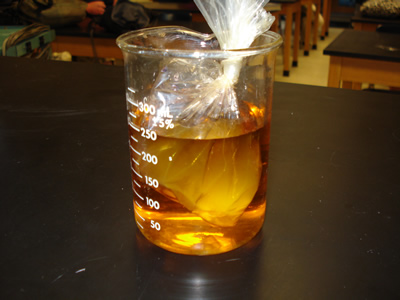Opening up a frog and looking at its insides is not exactly the most appetizing thing to do before lunch. Last week, in science class, we dissected frogs. At first, I wouldn't even look at the frog. Finally, I mustered up the courage to poke it. After that, I was able to help cut it open and even help point out the organs. My groups frog was a female, so we named her Kermita. On the first day of dissection we only opened up Kermita and observed her organs. Kermita's organs seemed to all be squished in a small space. The first thing I noticed after opening up Kermita was the hundred of tiny, black balls that were everywhere. These were her eggs. I had predicted that her eggs would be enclosed in sac like ovaries in a human body. Instead, the eggs were everywhere.
The next day, my group took out the organs and tried to name them. We noticed that the organs inside the frog were very similar to the organs inside a human body. Kermita had a heart, liver, stomach, lungs, and many other organs also found inside a human body. All of these organs have the same function in a frog as they do in a human. For instance, the liver makes bile in both frogs and humans. A few differences that Kermita had from a human were that she had oviducts, a cloaca, and smaller organs. The oviducts carry and transport eggs. The cloaca is where waste, eggs, and sperm exit the frog. In the end, the frog dissection was a lot of fun and helped teach our class about the organs in a frog.
Online dissection game:




